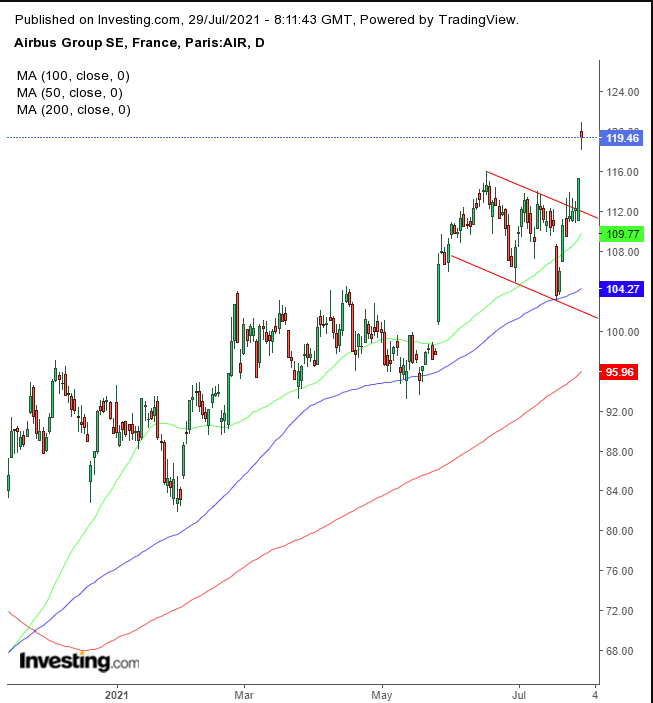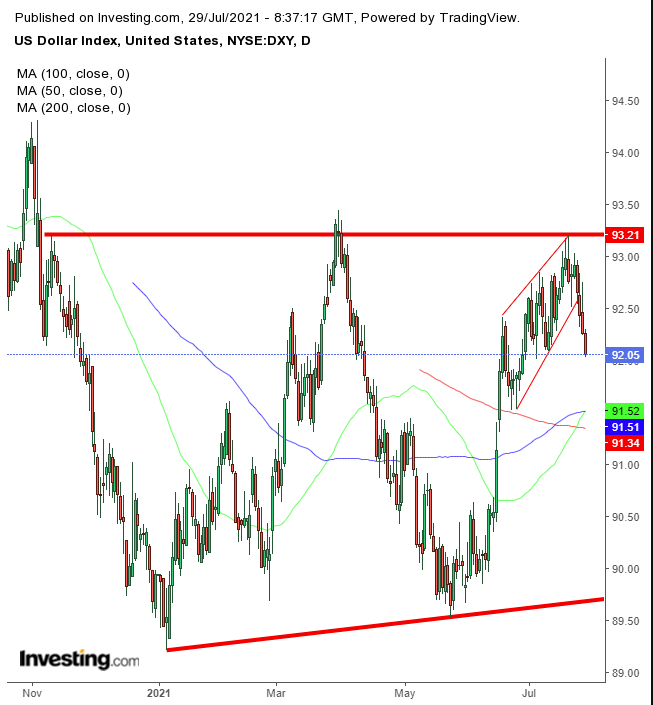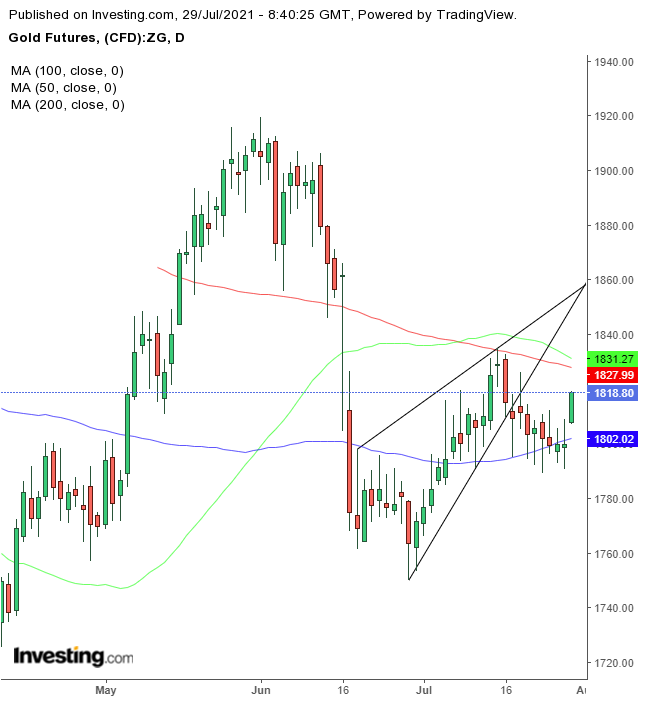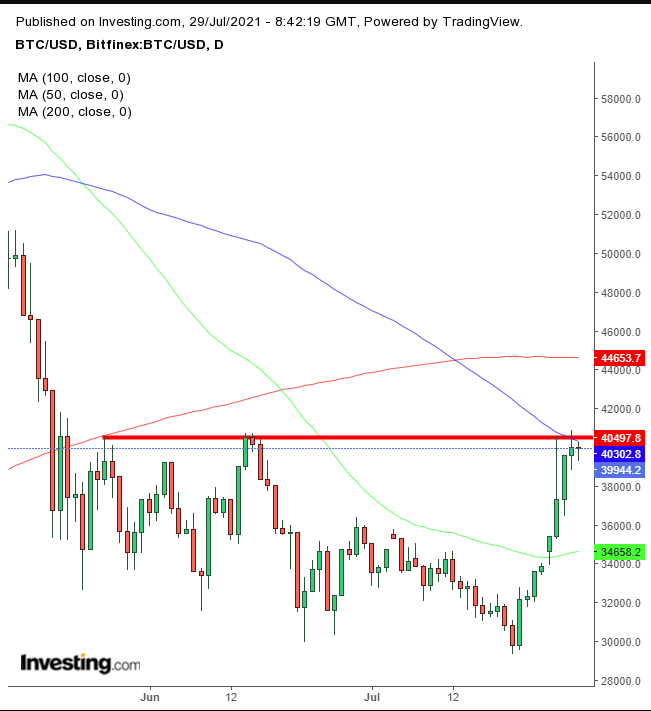- The Federal Reserve maintained ultra-loose policy
- China's PBoC added liquidity to sooth investors
- Continued strong earnings increases risk appetite
Key Events
US futures on the Dow, S&P, NASDAQ and Russell 2000 recovered in trading on Thursday, tracking global stocks in a muted rally after positive corporate earnings reassured investors that the economy is growing. On Wednesday the Fed reiterated that it will not tighten policy anytime soon adding to market optimism.
Bitcoin's rally slowed; the US dollar dipped.
Global Financial Affairs
Stocks were buoyed by dovish remarks from Federal Reserve Chair Jerome Powell yesterday, as well as by China's central bank today increasing liquidity there. On Wednesday, Powell clarified, yet again, that policy will remain ultra-loose a while longer. But investors will be sure to watch for data on US economic growth today, to see if the Fed will be actually able to maintain its accommodative policy while the highly contagious Delta strain of COVID-19 continues to spread.
US contracts painted a clear picture of the reflation trade, with Russell 2000 futures leading gains while NASDAQ 100 futures were the only contracts in the red. Futures on the Dow, whose blue-chip, mega-cap stocks are also heavily weighted toward value companies which shine in economic contractions, outperformed too.
Strong earnings extended a record for the STOXX 600 Index, boosted by a $2 billion stock buyback plan from Royal Dutch Shell (AS:RDSa), and Airbus (PA:AIR) which increased its profit target. The world’s largest airplane manufacturer jumped to its highest level since Feb. 26, nearly erasing the pandemic’s damage to its shares.

Having broken free of a falling channel, the price is now set to resume its underlying uptrend.
Asian markets finished in the green, after China soothed panicked investors, who had erased $1.5 trillion in market value. Beijing asserted that systemic risks “do not exist in the A-share market overall,” in a front-page commentary on the state-owned Security Times on Wednesday. The commentary stipulated:
“The macroeconomy is still in a steady rebound stage, and short-term fluctuations do not change the long-term positive outlook for A-shares.”
The PBoC infused a short-term cash injection into the economy, boosting regional stocks. Hong Kong’s Hang Seng outperformed, surging 3.25%, as dip-buyers rushed in after a double-digit selloff, which took the regional index below the 200 DMA amid the recent Chinese tech crackdown on the for-profit technology education sector, which had expanded into a $100 billion industry. China’s Shanghai Composite followed, finishing up 1.5%.
US stocks and Treasuries rallied Wednesday after the Fed's comments.
Google’s Alphabet (NASDAQ:GOOGL) hoisted indexes higher after beating expectations. The Dow Jones was pressured by McDonald’s (NYSE:MCD) following the fast food giant's corporate results. Facebook (NASDAQ:FB) fell in the aftermarket on weak guidance.
Yields on the 10-year Treasury note recovered from yesterday’s extended slump, but that didn’t help the dollar, which fell for the fourth day.

The greenback deepened the penetration of a downside breakout to a rising range, which found resistance by the neckline of a double-bottom, even though the 50 DMA crossed the 200 DMA, triggering a Golden Cross.
Gold was supported by a weakening dollar.

The yellow metal is retesting a bearish wedge as the 50 DMA falls back toward the 200 DMA after triggering a golden cross.
Bitcoin edged lower, but kept nearly all the gains of an eight-day rally, finding resistance by the 100 DMA for the fourth day.

While the cryptocurrency was able to maintain its $40,000 level, if it goes higher, it will have completed a bottom.
Oil continued to move north, after a two-week high, on falling US inventories.

The price has cleared the neckline of a small H&S top. While some may interpret the price behavior as that of a falling flag (dotted red lines), it lacks the flagpole, the sharp up-move that precedes a true falling flag, infused with all the interest that follows such a surge.
Up Ahead
- On Friday Eurozone CPI is released.
- Europe's largest economy, Germany publishes its quarterly GDP figure on Friday.
- Canada reports its GDP on Friday.
Market Moves
Stocks
- The STOXX 600 rose 0.3%
- Futures on the S&P 500 rose 0.1%
- Futures on the NASDAQ 100 were little changed
- Futures on the Dow Jones Industrial Average rose 0.3%
- The MSCI Asia Pacific Index rose 1.6%
- The MSCI Emerging Markets Index rose 1.9%
Currencies
- The Dollar Index fell 0.3%
- The euro rose 0.2% to $1.1869
- The Japanese yen was little changed at 109.82 per dollar
- The offshore yuan rose 0.3% to 6.4665 per dollar
- The British pound rose 0.3% to $1.3945
Bonds
- The yield on 10-year Treasuries advanced one basis point to 1.24%
- Germany’s 10-year yield was little changed at -0.46%
- Britain’s 10-year yield was little changed at 0.57%
Commodities
- Brent crude rose 0.8% to $75.31 a barrel
- Spot gold rose 0.7% to $1,819.54 an ounce
